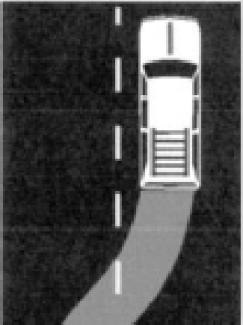Passing Another Vehicle
When considering passing a vehicle ahead, ask yourself the following three (3) questions. All three (3) questions must be YES for you to justify passing:
- Is Passing Legal?
- Is Passing Safe?
- Is Passing Worth it?

Passing a vehicle on the left:
On multiple lane highways, the law requires you to use the left lane to pass and the right lane for through traffic or normal driving. When you are being passed by another vehicle, you should reduce your speed a little and keep to the right. This will allow the other driver to pass safely.
When approaching another vehicle from the rear and you want to pass, be sure you have sufficient distance to pass safely and check your blind spots. Blind spots are areas that cannot be seen in your rear or side-view mirrors. Before making any lane, changes or passing maneuvers, a motorist must check over his or her left or right shoulders to view the areas not visible in the mirrors. Avoid placing packages or other large items in the back seat or on the rear window ledge, which could cause a blind spot.
- Give a left turn signal to let the driver ahead/behind you know that you will be pulling out.
- Look to the rear through the rear view and side view mirrors and over your left shoulder to view any blind spots that may exist.
- Proceed to change lanes and pass on the left.
- Cancel your left turn signal.
- At night it might be necessary to blink your headlights from low beam to high beam and back to low beam to warn the driver in front of you that you intend to pass.
- When you have safely passed the vehicle, activate your right turn signal.
- You should go far enough past the vehicle you are passing so that you are able to see the tires on the pavement of the vehicle you passed in your inside rear-view mirror. It will then be safe to return to the right side of the road.
- In general, pass vehicles only on the left.
- Never pass more than one (1) vehicle.
- Never travel over the posted speed to pass a vehicle.
Passing a vehicle on the right:
A driver may pass on the right of another vehicle only as follows:
- When the motor vehicle ahead is making or about to make a left turn
- On a street or highway that is wide enough for two or more lanes of traffic with no obstructions and not occupied by parked vehicles.
- On a one-way street or roadway wide enough for two or more lanes of traffic and free of obstructions or parked vehicles.
Under no conditions can you drive off the pavement or main traveled portion of the road to pass a motor vehicle. Passing on a hill, curve, railroad crossing, at an intersection, where signs prohibit, over solid lines, entering a tunnel or bridge, or over the posted speed limit is dangerous and may be the last mistake you make.